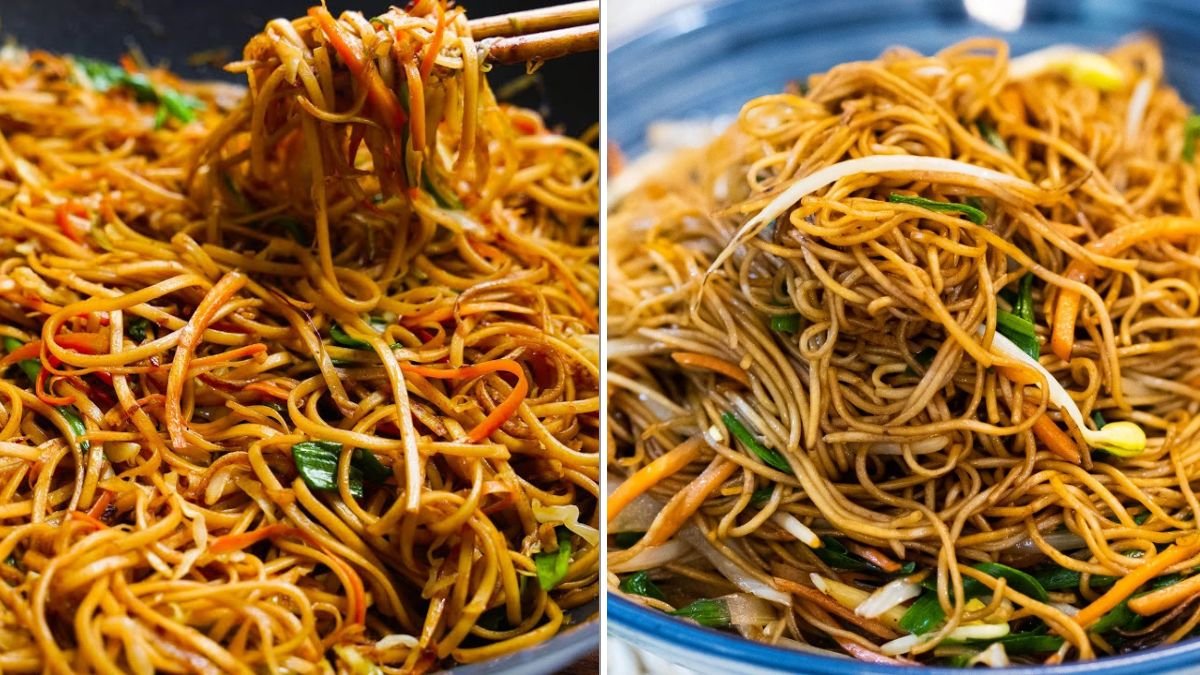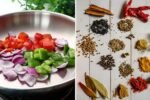Few dishes capture the magic of Indo-Chinese cooking quite like Vegetable Chow Mein. With perfectly cooked noodles tossed in a medley of colorful vegetables, soy sauce, and a hint of spice, it’s the ultimate comfort food — flavorful, satisfying, and surprisingly simple to make at home.
Unlike takeout versions that can be oily or overly salty, homemade Chow Mein gives you full control — more fresh veggies, less oil, and just the right balance of flavors. Whether you’re cooking for a family dinner or craving a quick weekend treat, this dish comes together in less than 30 minutes.
Here’s your 5-step guide to making Chow Mein with fresh vegetables easily, complete with practical tips to achieve that authentic restaurant-style taste right from your kitchen.
Step 1: Gather and Prep All Ingredients
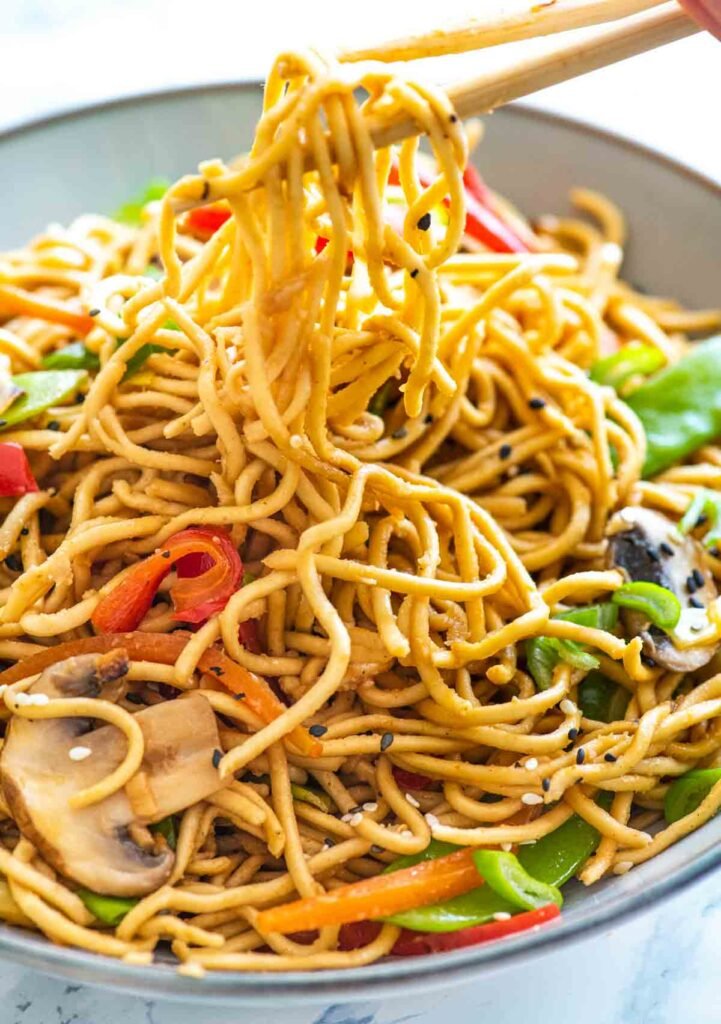
Before you fire up the stove, get all your ingredients ready. Chow Mein is cooked quickly over high heat, so everything needs to be prepped in advance.
Main Ingredients:
- 200 grams Chow Mein noodles (thin Hakka-style noodles work best)
- 2 tablespoons oil (preferably sesame or vegetable oil)
- 1 medium onion, thinly sliced
- ½ cup cabbage, shredded
- 1 small carrot, julienned (cut into thin matchsticks)
- ½ red bell pepper, thinly sliced
- ½ green bell pepper, thinly sliced
- 5–6 French beans, finely sliced
- 2–3 spring onions (white and green parts separated)
- 1 teaspoon chopped garlic
- ½ teaspoon chopped ginger
- 1 green chili, slit (optional for spice)
Sauce Mix:
- 1 tablespoon soy sauce
- 1 tablespoon green chili sauce (optional)
- 1 teaspoon vinegar
- 1 teaspoon tomato ketchup
- ½ teaspoon black pepper powder
- Salt to taste
Optional Garnish:
- Spring onion greens
- Toasted sesame oil drizzle
Tip: The key to authentic chow mein lies in fresh, crisp vegetables. Avoid overloading the dish with too many varieties — 4–5 colorful veggies are enough for balance and crunch.
Step 2: Boil the Noodles Perfectly
The foundation of great Chow Mein is noodles cooked just right — not mushy, not dry, but springy and bouncy.
- Boil 5–6 cups of water in a large pot.
- Add a teaspoon of salt and a few drops of oil to prevent sticking.
- Add the noodles and cook according to the package instructions (usually 3–4 minutes).
- Stir occasionally so they don’t clump together.
- Once they’re al dente (firm but cooked), drain immediately using a colander.
- Rinse the noodles under cold running water to stop the cooking process.
- Toss with a teaspoon of oil and set aside.
Pro Tip: Do not overcook your noodles. Slightly underdone noodles will continue to soften while stir-frying, ensuring perfect texture at the end.
Step 3: Stir-Fry the Vegetables on High Heat
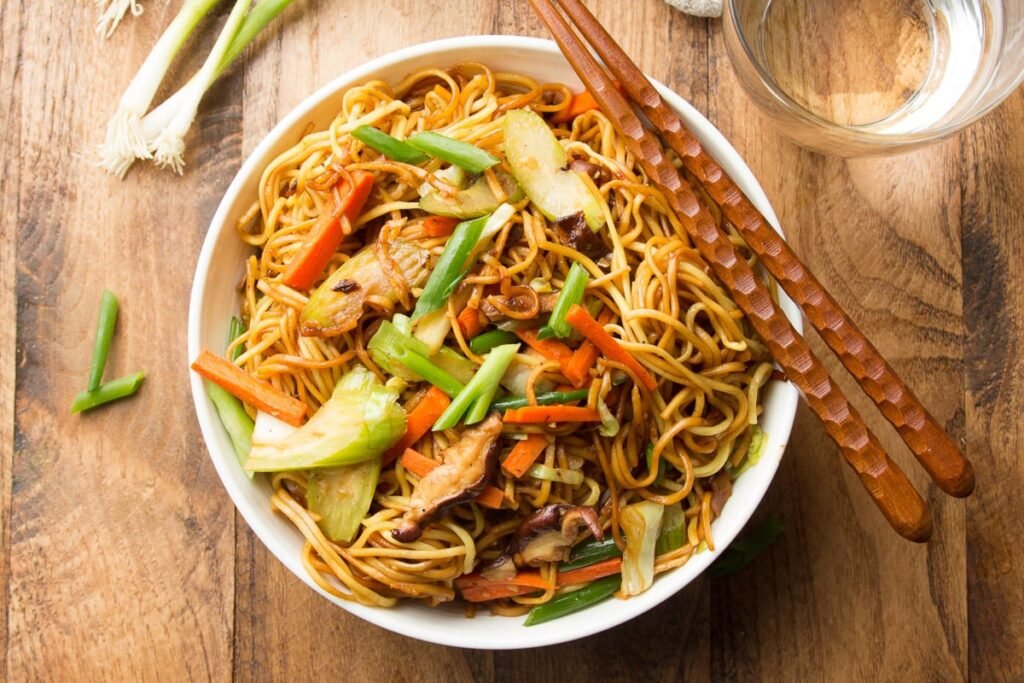
Now comes the exciting part — tossing those colorful veggies in a hot wok for that signature restaurant-style flavor.
- Heat 2 tablespoons of oil in a wok or a large skillet over high flame.
- Add chopped garlic and ginger. Stir-fry for a few seconds until fragrant.
- Add white parts of spring onions and sauté for 30 seconds.
- Now toss in the onions, carrots, beans, and bell peppers.
- Stir-fry for 2–3 minutes on high flame, keeping them crisp and slightly tender.
- Add the shredded cabbage last, as it wilts faster.
The trick is to keep the flame high and stir constantly. This not only cooks the vegetables evenly but also helps them retain color, crunch, and nutrition.
Optional Add-ins:
Add mushrooms, baby corn, or bok choy for more variety. If you like a spicy edge, throw in a few dried red chilies or a teaspoon of chili oil.
Step 4: Add the Sauces and Seasoning
This is where your Chow Mein gets its classic Indo-Chinese flavor — savory, tangy, and just a hint of spice.
- Reduce the heat slightly and add:
- 1 tablespoon soy sauce
- 1 teaspoon vinegar
- 1 teaspoon tomato ketchup
- 1 tablespoon green chili sauce (optional for heat)
- Salt and black pepper to taste
- Mix well to coat the vegetables evenly in the sauces.
- Stir for 1–2 minutes on high flame until everything looks glossy and aromatic.
Flavor tip: For a street-style punch, add ½ teaspoon of Schezwan sauce or a dash of chili vinegar.
Don’t go overboard with sauces — Chow Mein should be lightly coated, not drenched. The goal is to enhance the noodles’ flavor, not overpower it.
Step 5: Add the Noodles and Toss Everything Together
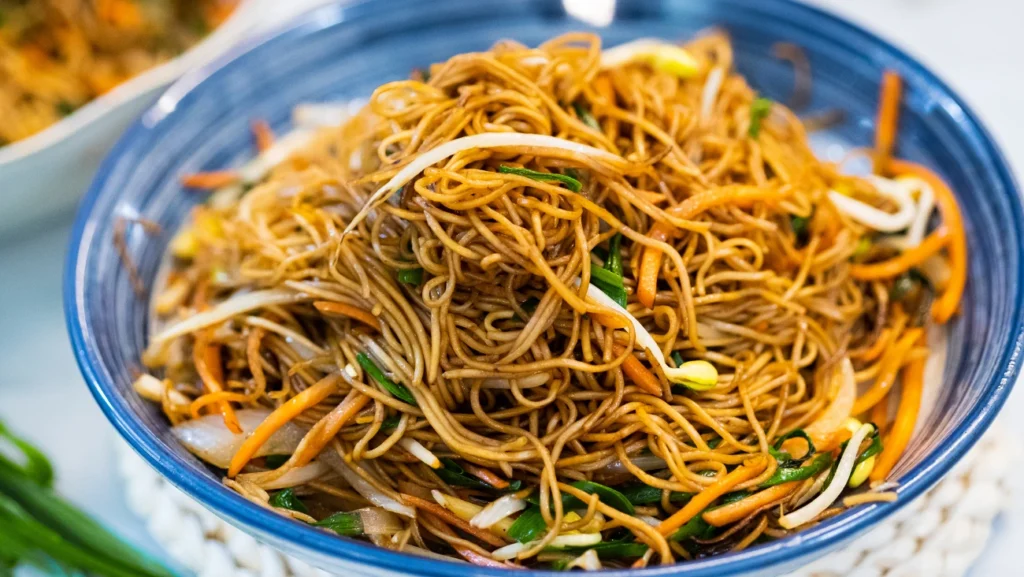
Now it’s time to bring it all together!
- Add the boiled noodles to the wok with the vegetables.
- Using tongs or two forks, gently lift and toss the noodles so they mix evenly with the vegetables and sauce.
- Add green parts of spring onions for freshness and color.
- Stir-fry for 2–3 minutes on high flame. Keep tossing continuously to ensure even coating.
If the noodles seem a bit dry, you can add 1–2 tablespoons of water or broth to loosen them up.
Once everything is well combined, taste and adjust salt or pepper as needed. For an extra shine and aroma, drizzle a few drops of toasted sesame oil before serving.
Bonus Tips for Perfect Veg Chow Mein
- Use the right noodles: Always go for thin Hakka or Chow Mein noodles — instant noodles or spaghetti won’t give the same chewy texture.
- Cook fast, cook hot: Authentic stir-frying happens on high flame; it’s the secret behind restaurant-style wok aroma.
- Don’t crowd the pan: If your pan is small, cook in batches to avoid steaming the veggies.
- Keep veggies crunchy: Overcooked vegetables make Chow Mein soggy. Two to three minutes of high-heat tossing is all you need.
- Use neutral oil: Sesame, peanut, or sunflower oil works best. Avoid strong-smelling oils like mustard.
How to Serve Veg Chow Mein
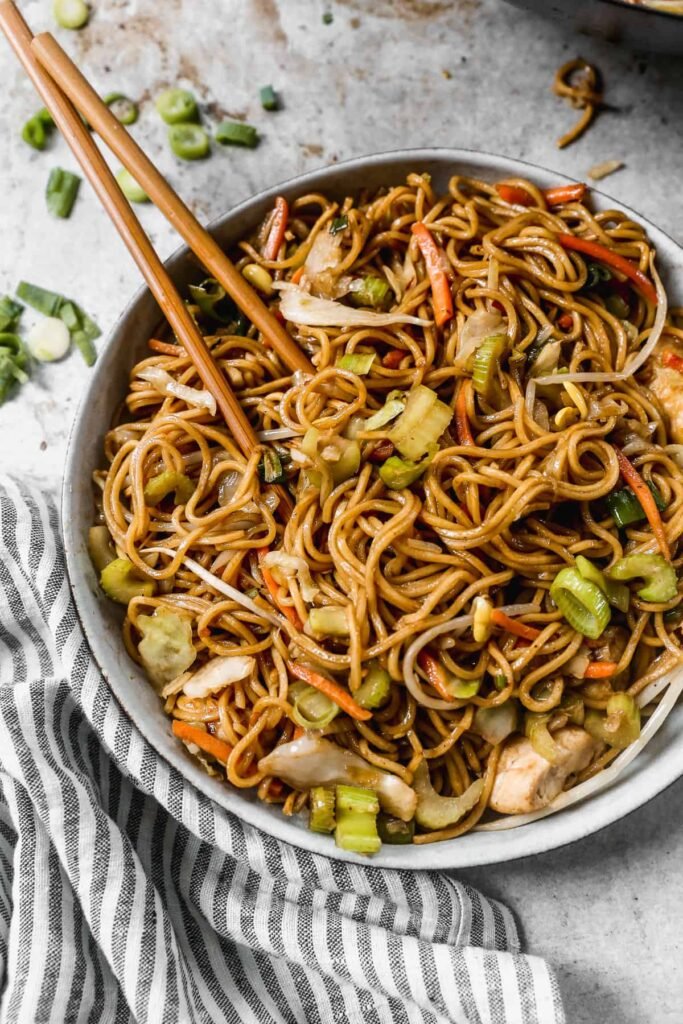
Serve your Veg Chow Mein hot and steaming straight from the wok. It pairs perfectly with:
- Veg Manchurian (Dry or Gravy)
- Chili Paneer
- Hot and Sour Soup
- Schezwan Fried Rice
You can also enjoy it as a standalone dish, garnished with spring onions and a drizzle of chili oil. For kids, reduce the spice and serve with tomato ketchup for a milder version.
Make It Healthier
Want to give your Chow Mein a nutritious twist? Try these easy variations:
- Use whole wheat or millet noodles for more fiber.
- Add tofu or paneer cubes for extra protein.
- Include colorful veggies like zucchini, baby corn, spinach, or mushrooms for more vitamins and crunch.
- Cut down oil by stir-frying in a non-stick wok.
Common Mistakes to Avoid
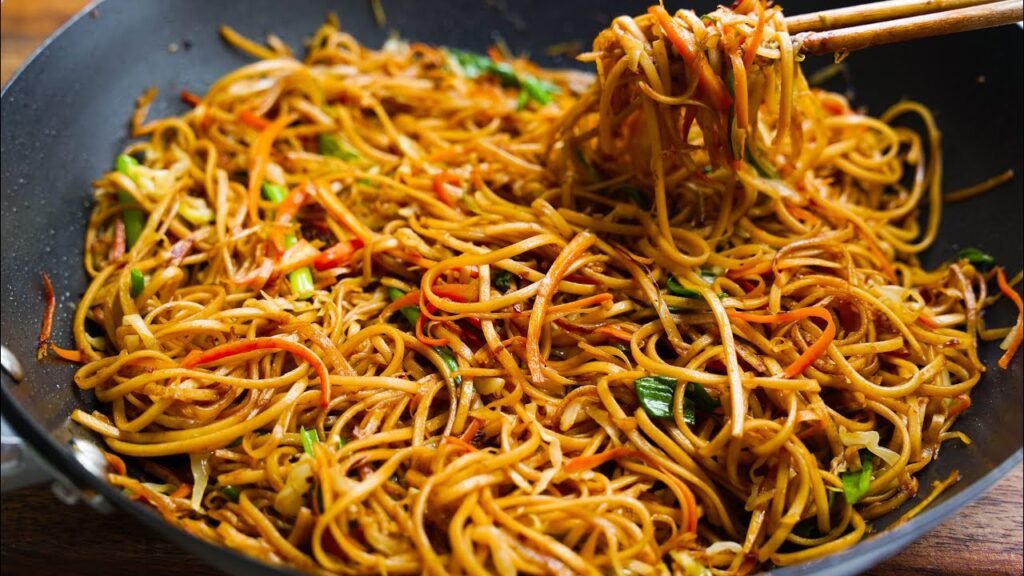
- Overcooking noodles: Soft noodles break apart easily. Always undercook slightly before stir-frying.
- Adding sauces too early: Sauces should go in after veggies are cooked — otherwise, they burn and taste bitter.
- Skipping the cold rinse: This step prevents noodles from sticking and ensures they stay bouncy.
- Too many sauces: Chow Mein should have a subtle, balanced flavor — don’t drown your noodles in condiments.
Final Thoughts
Making Chow Mein with fresh vegetables at home is simple, healthy, and endlessly satisfying. With just a handful of ingredients and these five easy steps, you can create a restaurant-quality dish that’s bursting with flavor and color.
From the crunch of fresh vegetables to the umami richness of soy sauce and the delicate chew of noodles, every bite feels like a delicious fusion of comfort and excitement.
So, next time you’re craving takeout-style noodles, skip the delivery — grab your wok, toss in some fresh veggies, and whip up this homemade Chow Mein masterpiece. Fast, fresh, and flavorful — it’s everything you love about Indo-Chinese cuisine, right from your kitchen!
